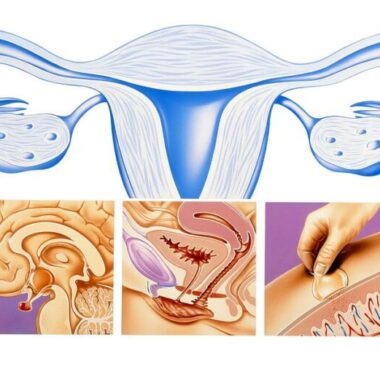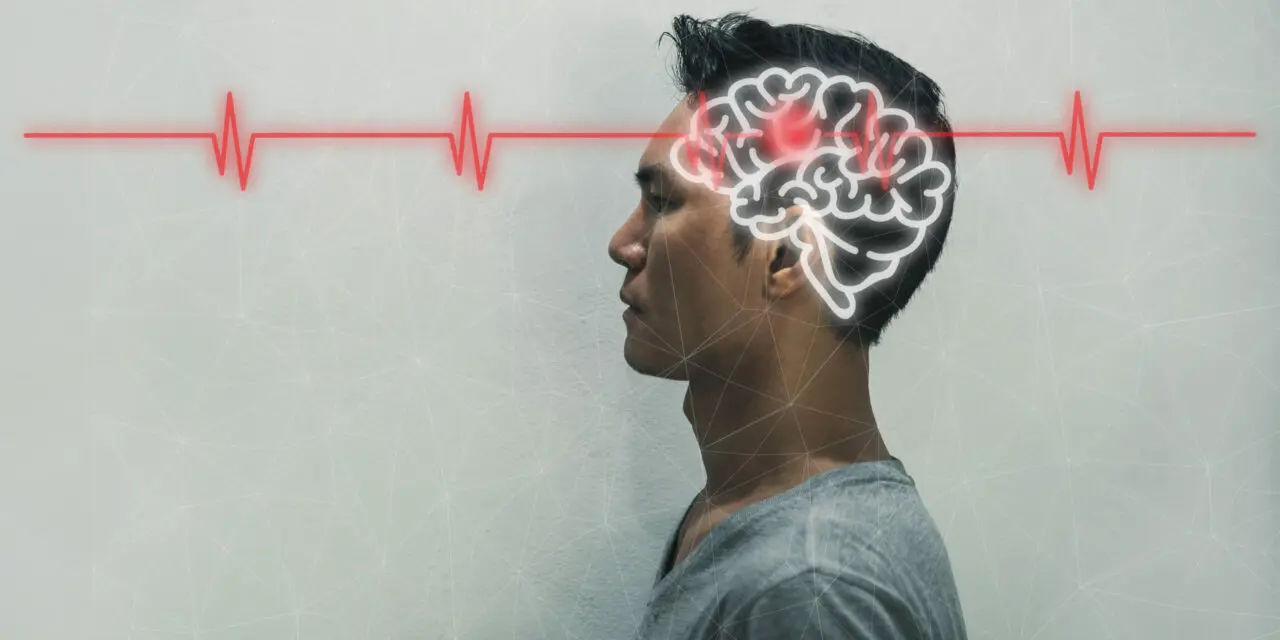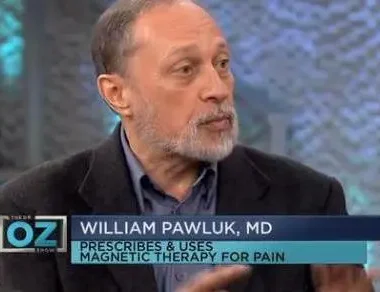Prostate Hyperplasia or enlargement (BPH)
Table of Contents

Prostate hyperplasia, also known as benign prostate hyperplasia (BPH), or enlarged prostate, is a fairly common prostate problem for men. In fact, in North America alone, it is one of the most common diseases conditions in men. BPH has several potential dangers and complications for those who suffer from the condition. It can lead to severe discomfort and urinary obstruction, often considered a medical emergency, if severe enough. Not only that, but BPH can also co-occur with prostate cancer. Therefore, it is essential to use BPH treatments that are effective.
The rate of biopsy proven BPH increases from 8 percent in men aged 31-40, to 40-50 percent in men ages 51 to 60, to over 80 percent in men older than age 80. As you can see, benign prostatic hyperplasia is an affliction that is common in older men. In fact, it is so common that most men who are age 50+ will likely develop either BPH symptoms. Benign prostatic hyperplasia (BPH) is a result of urogenital aging. Recent studies suggest that an age-related impairment of the blood supply to the lower urinary tract and chronic inflammation play roles in the development of BPH and thus are contributing factors in the development of BPH.
The prostate gland is normally the size of a walnut and produces prostatic fluid. This fluid is the main component of semen. By the time a man reaches 60 years of age, the swollen prostate may grow to be the size of a lemon. Due to its increased size, it may press more on the bottom of the bladder, causing frequent visits to the bathroom. A common complaint among men who suffer from BPH is that they have to visit the bathroom many times throughout the night.
Although the frequency of urinating is increased, this does not mean that the bladder will completely empty every time. As with most other medical conditions, if BPH is left ignored and untreated it can worsen over time. This can lead to a number of complications.
While BPH is not a life ending condition, it is vital for both patients and doctors to learn as much as they can about how to treat BPH in its early stages. By offering effective enlarged prostate treatment early enough this could prevent the bladder from malfunctioning and potentially harming the kidneys. BPH medications can help stop the condition from developing further.
Medications may slightly reduce swollen prostate size and improve symptoms. However, they have less benefit as the prostate gets larger and prostate health progressively diminishes. A definitive solution for BPH is surgical, or other invasive interventions, to reduce the size of the prostate and improve the flow of urine. BPH has been treated with various types of destructive high energy, high-frequency, radiation methods such as transurethral needle ablation (TUNA), interstitial laser therapy (ILC), and holmium laser resection (HoLRP).
Unfortunately, these therapies often lead to major complications, including urinary incontinence and impotence. Because of the complications of these invasive procedures research shows that men will often try to live with their obstruction symptoms as long as possible.
So, a natural question is whether there are other less risky or dangerous procedures. Or, if there are BPH treatment approaches that can be used that are effective. This is particularly important in the setting of known enlargement without obstruction. This article will explore PEMF therapy and how it can work as an effective BPH treatment for BPH symptoms. We will also discuss some of the recent studies on PEMF for BPH. These are relative in the search for enlarged prostate treatment.
LACK OF BENIGN PROSTATIC HYPERPLASIA AWARENESS
We already understand some of the risk factors and complications that can occur from BPH. However, we do not know as much as is needed. Some of the factors that contribute to BPH are age, prostate infection, inflammation, cardiovascular disease, diabetes, metabolic syndrome and hypertension. It’s likely that multiple risk factors cause BPH.
We have, however, found that inflammatory damage 1 of the most significant factors in the development of BPH. When a man has inflammation, this can trigger a lack of oxygen to the affected area. This inflammation leads to prostate problems and structural prostate and bladder changes. A vicious cycle then develops as the inflammation causes prostate gland remodeling and growth in tissue.
Having said that, age clearly plays an important part in the development of BPH. BPH is a common condition for older men. Some research suggests that a man’s testicles can play a key role, alongside aging. Many doctors even believe that reduced levels of testosterone can occur. While this reduction in testosterone is not contributing to BPH, it can allow dihydrotestosterone to build up, causing the prostate to enlarge. In addition, some further evidence shows that this condition may also be hereditary.
Since there is no cure for BPH, a traditional enlarged prostate treatment for men with BPH includes surgery and medications like alpha-blockers. However, these types of BPH treatments pose potential complications and side effects for the patient. For instance, some of the side effects may include an inability to ejaculate, loss of bladder control, and erectile dysfunction. It can even induce retrograde ejaculation, which is where the semen flows back into the bladder.
Quite clearly, the medical industry needs to develop non-invasive treatments for BPH soon rather than later.
PULSED ELECTROMAGNETIC FIELD (PEMF) THERAPY AND BENIGN PROSTATIC HYPERPLASIA
What could PEMF therapy offer patients who are living with BPH and want relief? Is PEMF for BPH a good treatment plan at all? PEMF devices are a non-invasive alternative to help treat many ailments. Pulsed electromagnetic field therapy consists of low frequency waves, that are perfectly harmless to the body. PEMF therapy has been known to help treat many medical conditions including reducing pain.
But how does it work? In simple terms, the electromagnetic energy waves help to reduce inflammation. This then helps to oxygenate the tissues and help blood vessel growth and reduces growth of the excess tissue. Electromagnetic field waves have also been known to help increase a person’s blood flow. Due to a better blood flow, this age-related affliction could potentially be reversed and leading to the prostate pain reducing and decreasing down to normal size.
While we can safely say that PEMF therapy is an ideal non-invasive option, there are few studies relating to PEMF for BPH. These studies set out to determine enlarged prostate treatment for men who suffer from the condition.
However, there have been two published studies where they used PEMF devices to help treat men with BPH and dogs. While these had interesting and variable results, they provide hope for men who are suffering from BPH and seek relief. Continue reading below to find out more about the studies with PEMF for BPH therapy and what it tells us about treating BPH.
NEW STUDIES SHOW IMPROVEMENT WITH PEMFS
Over recent years, there has been some research done to find out how PEMF therapy can help patients who are suffering from various ailments. As PEMF devices have evolved, research has continued to gather data. This is wonderful news for patients and doctors alike as the industry works at finding a solution.
Traditionally, medications have been used to treat BPH. While these medications could reduce the size of the prostate in some men, they do come with their own set of side effects and potential complications. For men who are wanting a non-invasive treatment, the recent studies for PEMF and BHP show great promise.
There have been two therapeutic studies recently that lend support to the use of PEMFs to noninvasively, and safely, reduce the size of the prostate, therefore, increasing prostate health. One of these studies is in humans, the other in dogs.
In the human study, half of the patients with BPH, age 68-78 years old were treated with medication. This lasted for at least 4 weeks. Another group was treated with PEMFs (a high intensity magnetic device, like the PEMF 120) for 2 weeks. This was for for 30 min daily, 5 consecutive days per week. Patients of both groups were evaluated before and after drug and PEMF treatment by values of total PSA, acid phosphatase, ultrasound (U/S) estimation of prostate volume and residual urine, estimation of urine flow rate, and measurement of a subjective International Prostate Symptom Score (IPSS).
There was a significant decrease, before and after treatment, of IPSS and the objective measures of U/S prostate size, residual urine and urine flow rate in the PEMF-treated patients. In contrast, the medication treatment group had only improved the subjective symptom related IPSS. There was also a significant improvement in clinical symptoms in patients of the electromagnetic group. Follow-up of the PEMF treated patients for one year revealed that results obtained by PEMF treatment were still maintained.
The dog prostate is a model for understanding the abnormal growth of the human prostate gland. In a different research study, the authors studied the effectiveness of using PEMFs in dogs to modify prostate blood flow and evaluated its effect on BPH. PEMFs were applied, 5 min, twice a day for 3 weeks, on 20 dogs with BPH. A number of measurements were evaluated before and after treatment: prostate size by ultrasound, semen quality, testosterone levels, plasma volume, composition, and pH.
The PEMF signal (approximately 100 milliTesla – comparable to the Parmeds Ultra) produced a significant reduction in prostatic volume by an average of 57% without any interference with semen quality, or testosterone levels. Doppler ultrasound showed improved circulation. They concluded that this approach would have suitability for the treatment of humans, as seen with the improvement of BPH in dogs, with no side effects. It further supports the theory that impairment of blood supply to the lower urinary tract may be a causative factor in the development of BPH.
BPH FROM INFECTION
Not infrequently, chronic prostate enlargement is caused by a history of infection in the prostate. These infections are notoriously challenging to eradicate. In our book (Magnetic therapy in Eastern Europe: a review of 30 years of research) we reported on one large study evaluating the treatment of chronic prostate inflammation. About 10 to 15 percent of men suffer from this, which can cause disturbances in reproduction and sexual dysfunction.
The cause is unclear and current treatments, especially antibiotics, are largely unsatisfactory. While therapy must be comprehensive, PEMF therapy has been found to be of add-on benefit. A medium intensity (up to 10 mT) pulsed magnetic field device was used with treatments lasting 30 minutes at 25 Hz with exposures to the pelvic perineal area. Some patients were also treated with prostate medication such as antibiotics.
Patients were treated for nine weeks with daily PEMF treatments for the first two weeks, three times per week for the next week, twice per week for two weeks, and then once a week for four weeks. There were statistically significant improvements in pain scores, scores of sexual complaints, and burning on urination. Not only were there subjective improvements but also bladder flow studies improved in five of the six patients with abnormal urine flow curves. Signs of pelvic floor muscle spasm were also reduced.
No changes were found in the laboratory or other tests. There was no change in the PSA. Of the 4 people who did not respond, they had their prostatitis for more than 10 years. Little benefit was typically seen immediately after the treatment course ended. Most of the relief was delayed by up to three months after therapy ended.
BPH FROM CHRONIC INFLAMMATION
Enlargement of the prostate has historically only slightly been accounted for by underlying chronic prostate inflammation. Since prostate enlargement takes place over decades and is, at least in part, related to hormonal influence, any benefit from magnetic therapy in reducing the prostate size would be expected to happen over longer periods of time as well. If there is a significant mechanical obstruction caused by the large prostate, which is not acceptable to live with [and many men do live with this problem] then a surgical or other prostate treatment approach should be attempted.
While the magnetic field therapy may have little direct short-term value on the actual size of the prostate itself, there may be significant benefit in reducing discomfort and possibly improving bladder and urine flow control. Even if surgery and/or other procedures are used, recovery may be helped with PEMF therapy. PEMFs would also help medications, including antibiotics, do their work.
Neurological control of the prostate, bladder and bladder outlet is from the lower spine, therefore PEMFs should be used for this purpose over the lower spine. For bladder control PEMFs can be used over the bladder itself. For perineal discomfort magnets should be placed in this area or sat upon.
PEMFS AND HIDDEN CANCERS
Just in case there is concern that PEMFs may increase the risk of any hidden cancers in the prostate gland, another study showed that PEMFs could possibly reduce the growth of prostate cancer cells. Advanced stage hormone resistant prostate cancer currently has a very poor prognosis and no effective therapy. Using human prostate cancer cells, Taxol was added to cell cultures at various concentrations. Also 60 Hz PEMFs from 1 to 5 G were compared. Cell proliferation and cell cycle patterns were assessed. Low dose Taxol was found to inhibit cell proliferation.
After 48 hr of treatment with taxol, prostate cancer cells died. PEMF exposure also induced cancer cell death in human prostate cancer cells. The effect appears to be better when combined with taxol. So, Taxol and 60 Hz PEMFs appeared to induce prostate cancer cells to die. These encouraging results suggest an alternative anti-cancer effect of taxol and 60 Hz PEMF exposure on human prostate cancer cells. Effects of 60 Hz PEMFs on human prostate cancer cells demonstrate potential clinical therapeutic effects of PEMFs.
CONCLUSION
So, to conclude, PEMF therapies appear to be a promising approach to help manage a challenging health condition. BPH is a very common condition in men, particularly as they get older. What we do know is that, as with most medical conditions, the earlier treatment is used, the more chance of not suffering complications. If enlarged prostate treatment is offered sooner than later, this is likely to help the man prevent swelling and urinary obstruction.
This is especially important given that the current alternative therapy tends to be more invasive with the risk of side effects and for which current medical management is not very helpful in the long run, and rarely prevents progression of the condition. Some complications from invasive treatment can leave the patient feeling frustrated and dramatically affect quality of life. It is quite likely that PEMF treatment will have to be long-term in order to achieve the best results and prevent the problem from returning. It also appears that higher intensity PEMFs are necessary to achieve the results found in the two studies cited above and to reduce chronic inflammation.
Effects of pulsed electromagnetic fields on benign prostate hyperplasia. Giannakopoulos XK, Giotis C, Karkabounas SCh, Verginadis II, Simos YV, Peschos D, Evangelou AM. Int Urol Nephrol. 2011 Dec;43(4):955-60.
Effect of pulsed electromagnetic field therapy on prostate volume and vascularity in the treatment of benign prostatic hyperplasia: A pilot study in a canine model. Leoci R, Aiudi G, Silvestre F, Lissner E, Lacalandra GM. Prostate. 2014 Aug;74(11):1132-41.
Potential clinical application of taxol and power frequency electromagnetic fields exposure on human prostate disorders. Ning, J. T.; Gajendran, V.; Porter, C.; Medica, J.; Stein, B. S.; Zabbo, A.; Cohen, S. I.; Czerska, E. M.; Casamento, J. Second World Congress for Electricity and Magnetism in Biology and Medicine, 8-13 June, Bologna, Italy, Abstract No. I-7, p. 136-137.










